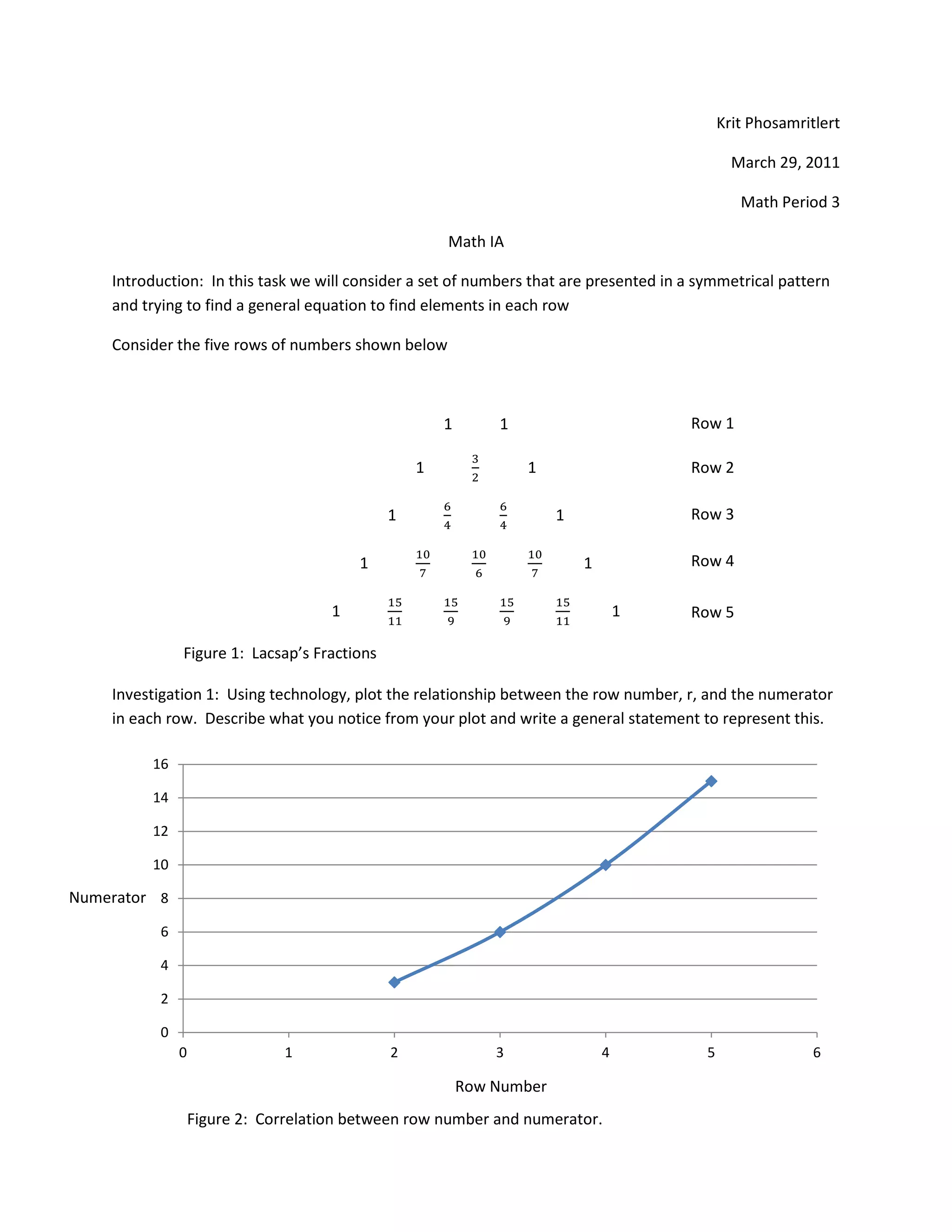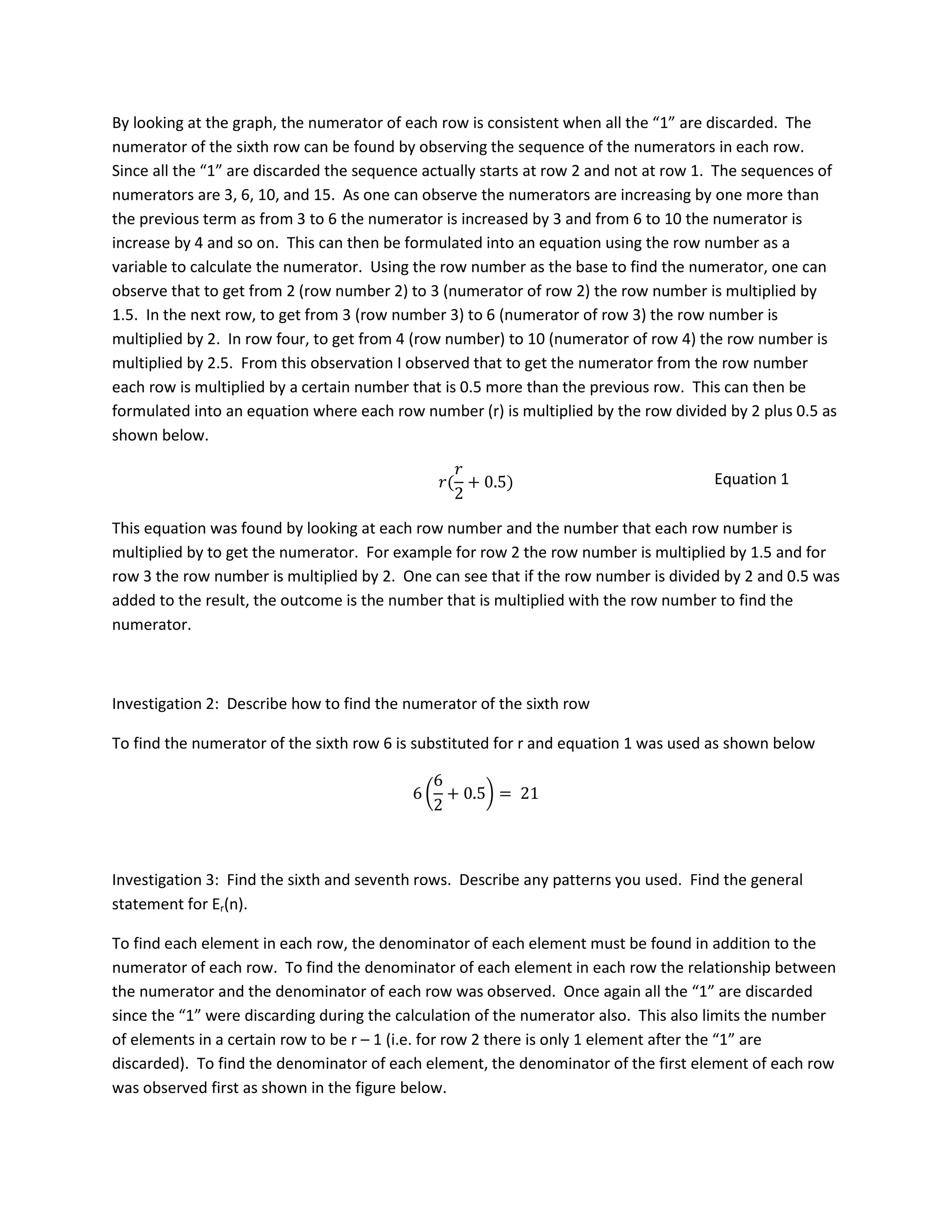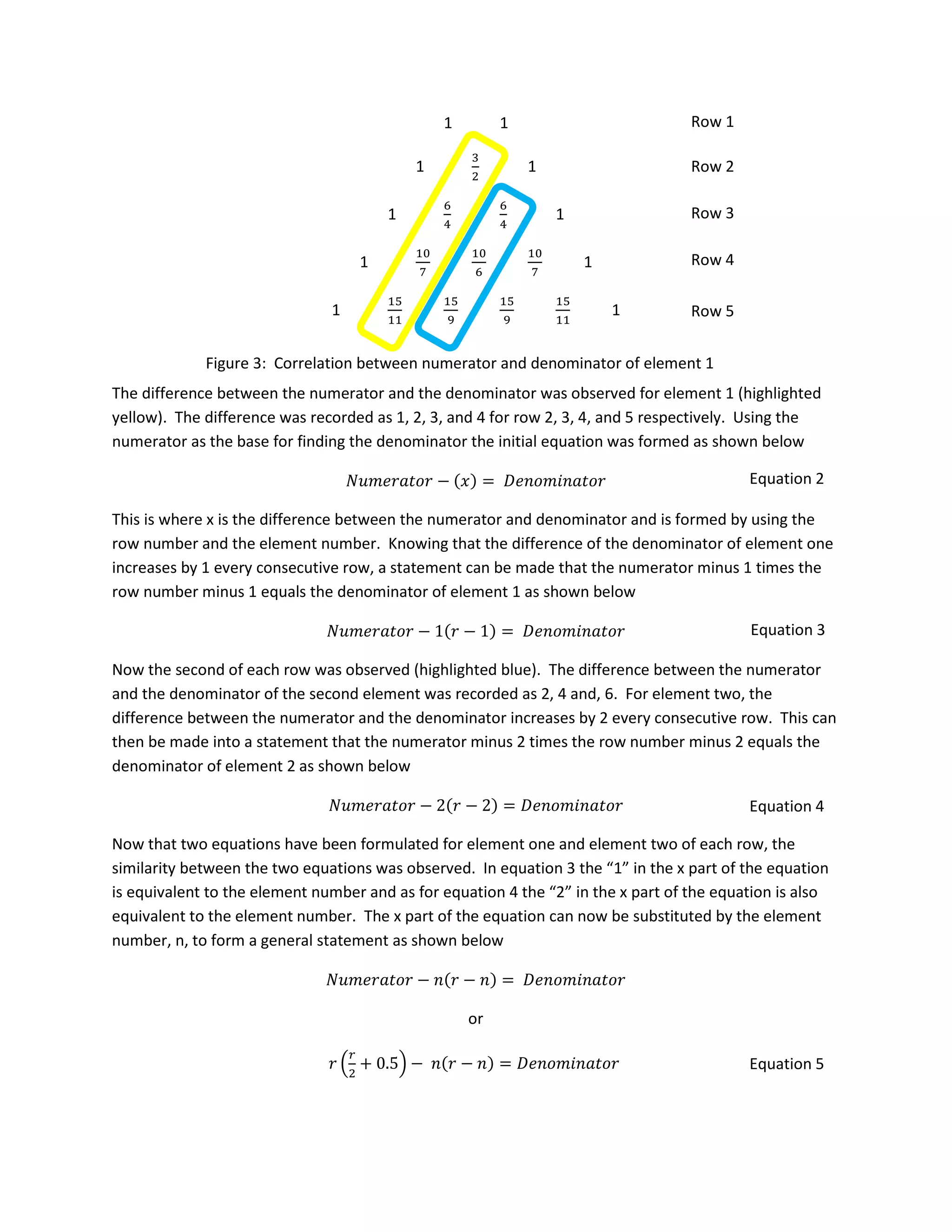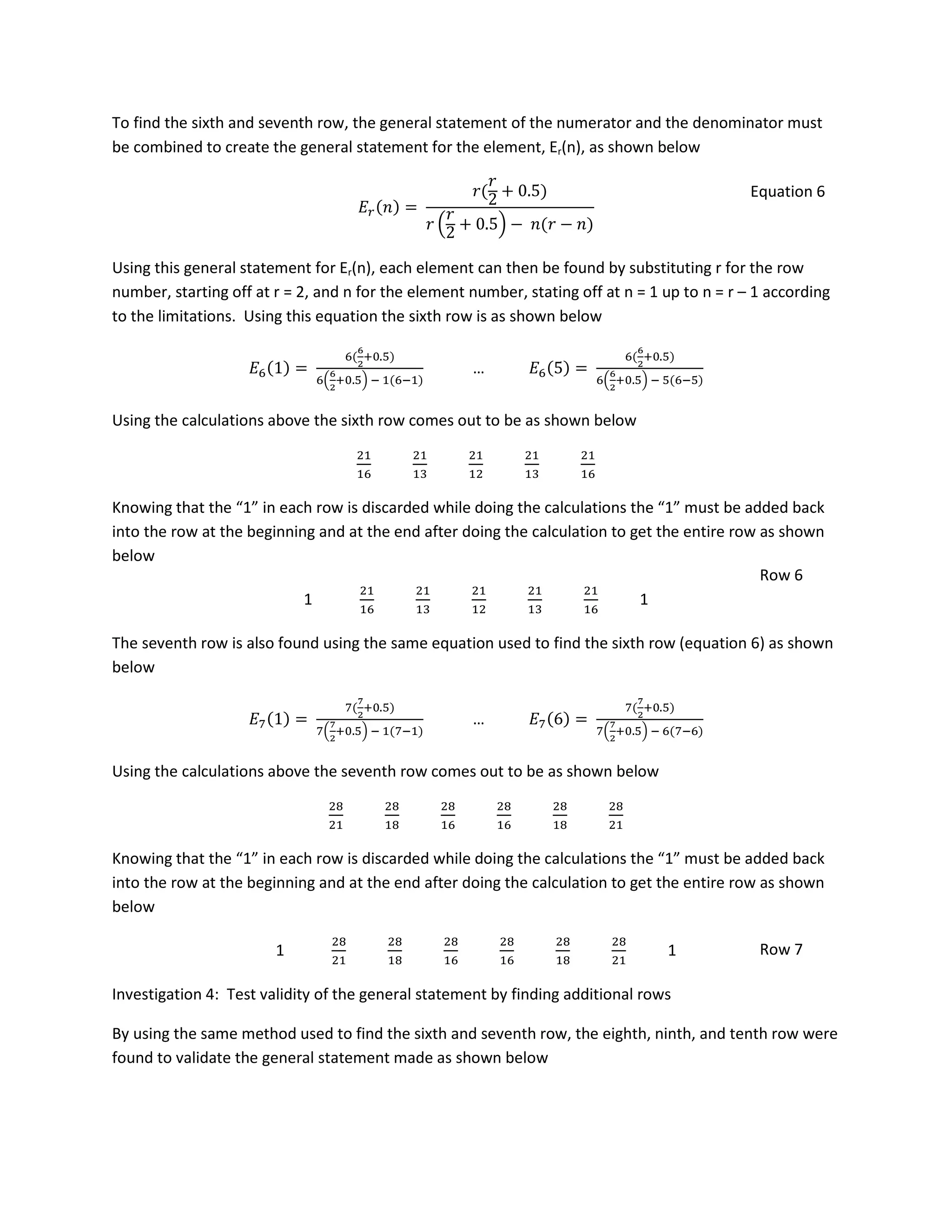This document presents an investigation into Lacsap's Fractions, a symmetrical pattern of numbers. The author derives a general equation to calculate any element in any given row. They plot the relationship between row number and numerator, noticing the numerators increase by one more than the previous term. This leads to an equation relating row number r and numerator. By observing patterns in the differences between numerators and denominators, they extend the equation to calculate any element Er(n). They validate the general equation by calculating additional rows. The limitations are it cannot calculate the first row or elements outside the range from 1 to r-1.






